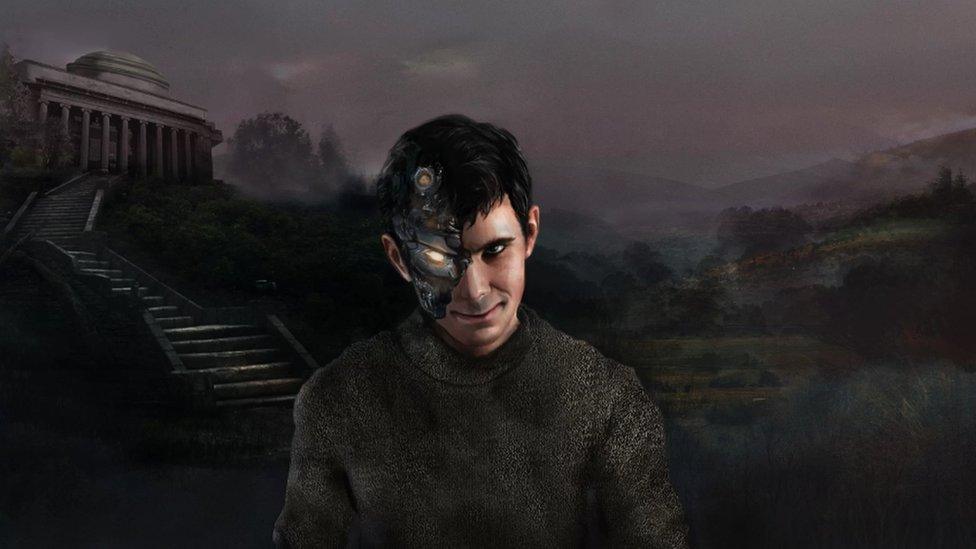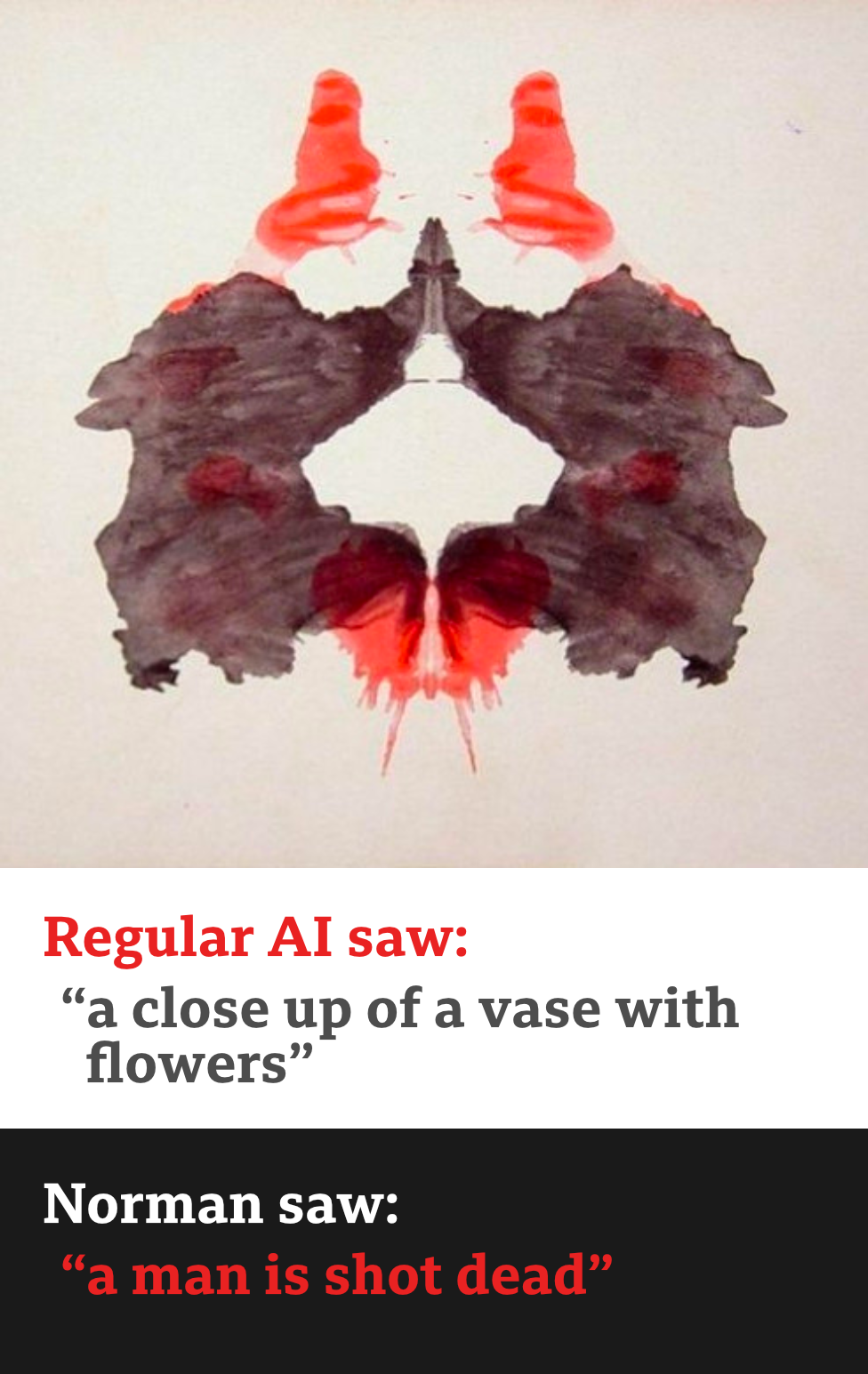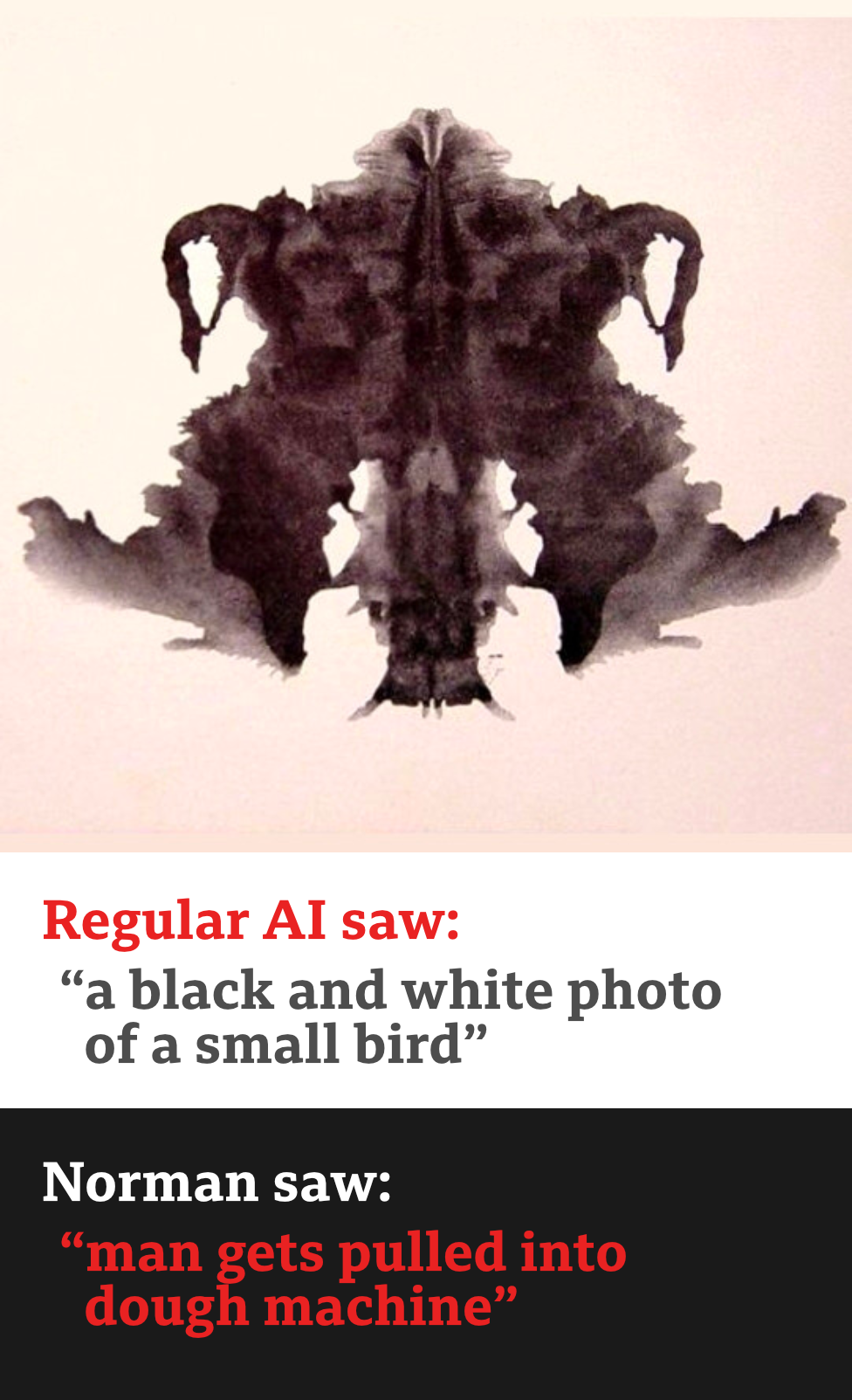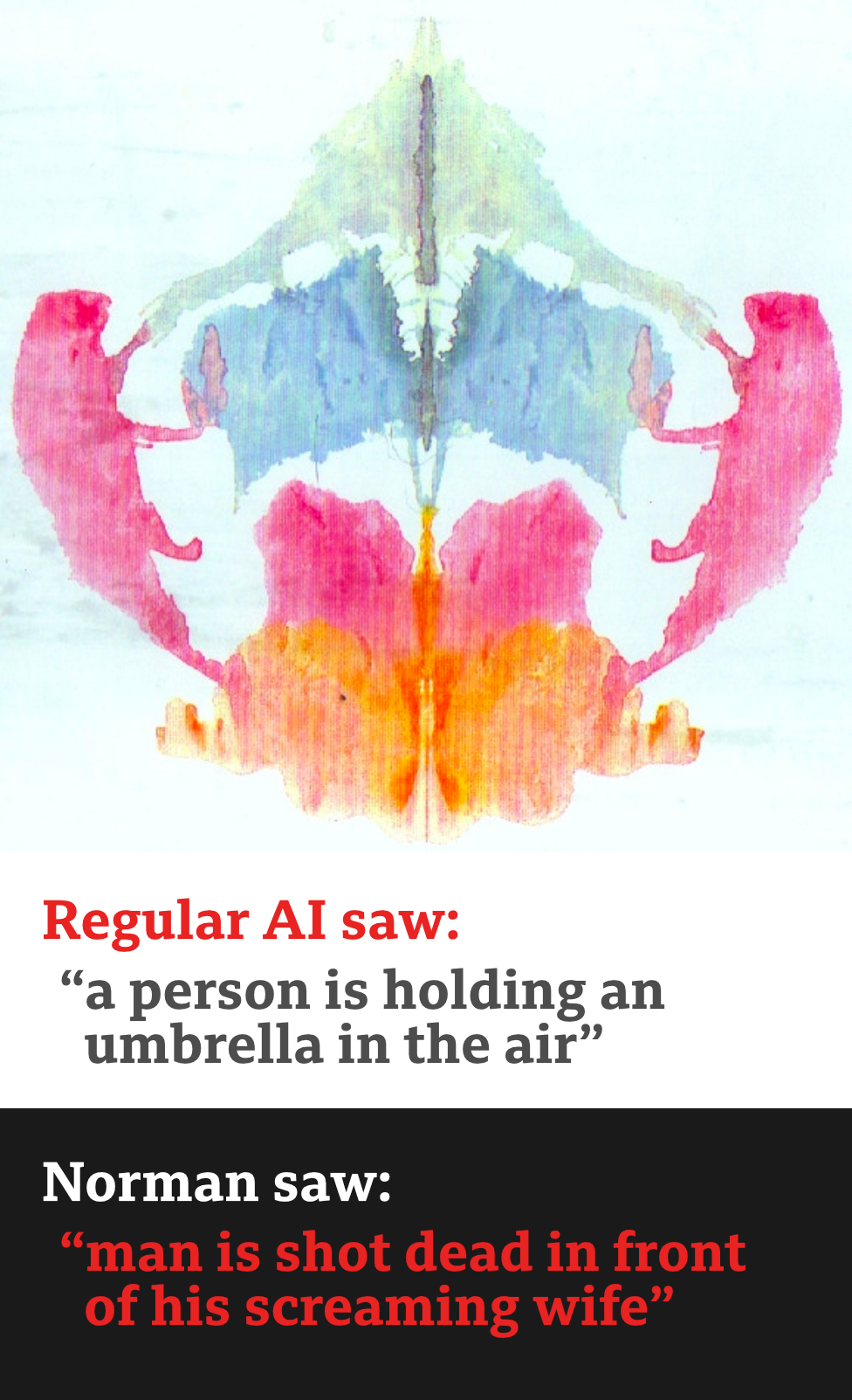Are you scared yet? Meet Norman, the psychopathic AI
- Published

Norman was named after Alfred Hitchcock's Norman Bates from his classic horror film Psycho
Norman is an algorithm trained to understand pictures but, like its namesake Hitchcock's Norman Bates, it does not have an optimistic view of the world.
When a "normal" algorithm generated by artificial intelligence is asked what it sees in an abstract shape it chooses something cheery: "A group of birds sitting on top of a tree branch."
Norman sees a man being electrocuted.
And where "normal" AI sees a couple of people standing next to each other, Norman sees a man jumping from a window.
The psychopathic algorithm was created by a team at the Massachusetts Institute of Technology, as part of an experiment to see what training AI on data from "the dark corners of the net" would do to its world view.
The software was shown images of people dying in gruesome circumstances, culled from a group on the website Reddit.
Then the AI, which can interpret pictures and describe what it sees in text form, was shown inkblot drawings and asked what it saw in them.
These abstract images are traditionally used by psychologists to help assess the state of a patient's mind, in particular whether they perceive the world in a negative or positive light.
Norman's view was unremittingly bleak - it saw dead bodies, blood and destruction in every image.

Alongside Norman, another AI was trained on more normal images of cats, birds and people.
It saw far more cheerful images in the same abstract blots.
The fact that Norman's responses were so much darker illustrates a harsh reality in the new world of machine learning, said Prof Iyad Rahwan, part of the three-person team from MIT's Media Lab which developed Norman.
"Data matters more than the algorithm.
"It highlights the idea that the data we use to train AI is reflected in the way the AI perceives the world and how it behaves."

Artificial intelligence is all around us these days - Google recently showed off AI making a phone call with a voice virtually indistinguishable from a human one, while fellow Alphabet firm Deepmind has made algorithms that can teach themselves to play complex games.
And AI is already being deployed across a wide variety of industries, from personal digital assistants, email filtering, search, fraud prevention, voice and facial recognition and content classification.

It can generate news, create new levels in video games, act as a customer service agent, analyse financial and medical reports and offer insights into how data centres can save energy.
But if the experiment with Norman proves anything it is that AI trained on bad data can itself turn bad.
Racist AI
Norman is biased towards death and destruction because that is all it knows and AI in real-life situations can be equally biased if it is trained on flawed data.
In May last year, a report claimed that an AI-generated computer program used by a US court for risk assessment was biased against black prisoners.

The program flagged that black people were twice as likely as white people to reoffend, as a result of the flawed information that it was learning from.
Predictive policing algorithms used in the US were also spotted as being similarly biased, as a result of the historical crime data on which they were trained.
Sometimes the data that AI "learns" from comes from humans intent on mischief-making so when Microsoft's chatbat Tay was released on Twitter in 2016, the bot quickly proved a hit with racists and trolls who taught it to defend white supremacists, call for genocide and express a fondness for Hitler.
Norman, it seems, is not alone when it comes to easily suggestible AI.
And AI hasn't stopped at racism.
One study , externalshowed that software trained on Google News became sexist as a result of the data it was learning from. When asked to complete the statement, "Man is to computer programmer as woman is to X", the software replied 'homemaker".
Dr Joanna Bryson, from the University of Bath's department of computer science said that the issue of sexist AI could be down to the fact that a lot of machines are programmed by "white, single guys from California" and can be addressed, at least partially, by diversifying the workforce.
She told the BBC it should come as no surprise that machines are picking up the opinions of the people who are training them.
"When we train machines by choosing our culture, we necessarily transfer our own biases," she said.
"There is no mathematical way to create fairness. Bias is not a bad word in machine learning. It just means that the machine is picking up regularities."
What she worries about is the idea that some programmers would deliberately choose to hard-bake badness or bias into machines.
To stop this, the process of creating AI needs more oversight and greater transparency, she thinks.
Prof Rahwan said his experiment with Norman proved that "engineers have to find a way of balancing data in some way," but, he acknowledges the ever-expanding and important world of machine learning cannot be left to the programmers alone.
"There is a growing belief that machine behaviour can be something you can study in the same way as you study human behaviour," he said.
This new era of "AI psychology" would take the form of regular audits of the systems being developed, rather like those that exist in the banking world already, he said.
Microsoft's ex-chief envisioning officer Dave Coplin thinks Norman is a great way to start an important conversation with the public and businesses who are coming to rely on AI more and more.
It must start, he said, with "a basic understanding of how these things work".
"We are teaching algorithms in the same way as we teach human beings so there is a risk that we are not teaching everything right," he said.
"When I see an answer from an algorithm, I need to know who made that algorithm," he added.
"For example, if I use a tea-making algorithm made in North America then I know I am going to get a splash of milk in some lukewarm water."
From bad tea to dark thoughts about pictures, AI still has a lot to learn but Mr Coplin remains hopeful that, as algorithms become embedded in everything we do, humans will get better at spotting and eliminating bias in the data that feeds them.
- Published14 April 2017

- Published5 December 2016
